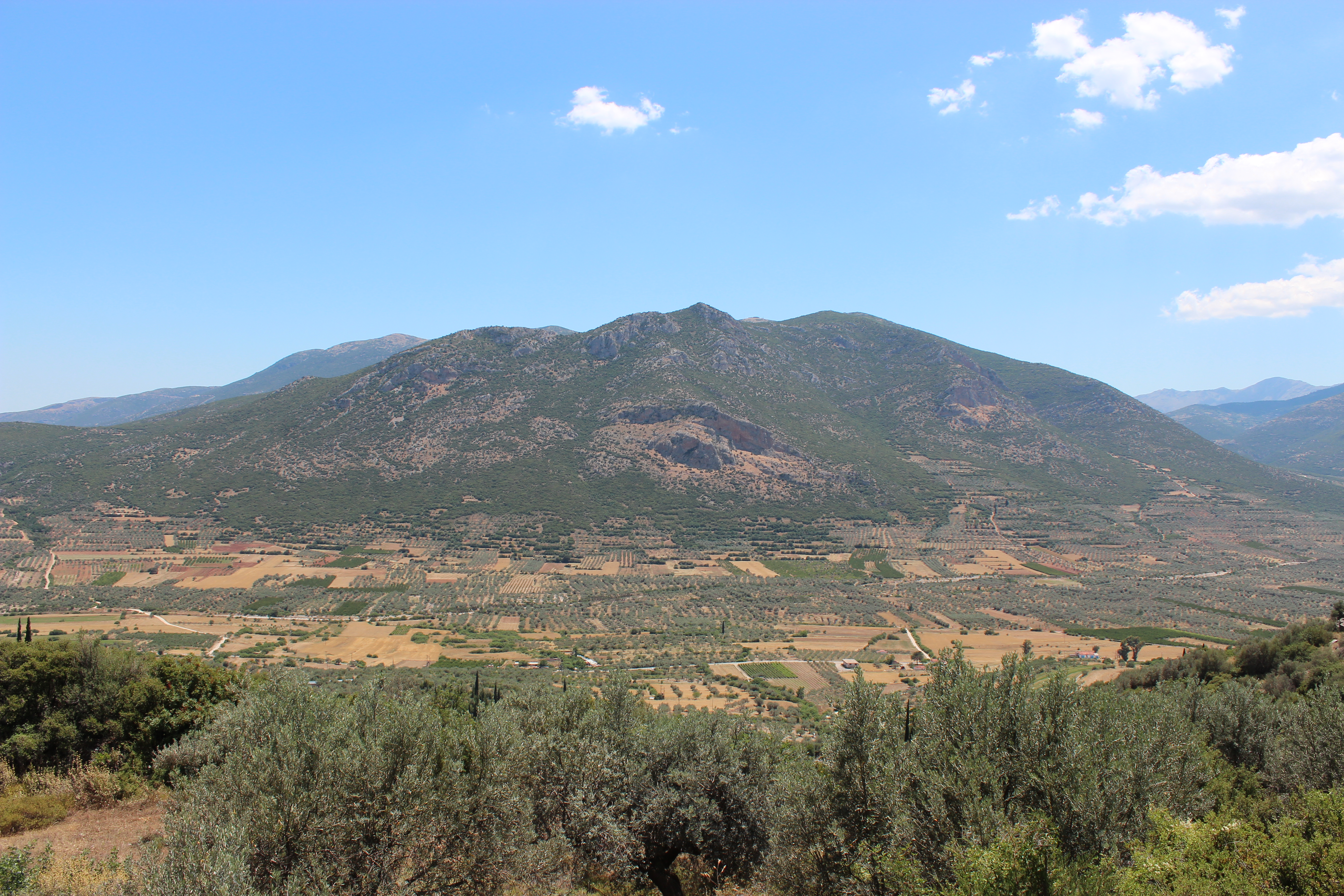June 9, 2023
by Sarah James

A quick look through your cellphone or email inbox can give extensive information about your personal network—who you talk to and where they’re from, what you buy and where you buy it from, and more. But how do archaeologists answer questions about networks, degrees of influence, preferences, and contacts in ancient times? In 2021 Sarah James and the Western Argolid Regional Project received an AIA-NEH Grant for Post-Fieldwork Research and Publication to do exactly that by conducting ceramic petrography on pottery samples collected by their archaeological field survey project in southern Greece between 2014 to 2017.
Ceramic petrography involves preparing delicate thin sections of ceramic materials and studying their mineralogical composition using a special polarized light microscope to learn more about the origins of the clay and any inclusions as well as the techniques used to produce the vessel. After completing the AIA-NEH Grant project, Sarah James sent us the following report to update the AIA community:
The Western Argolid Regional Project (WARP) was an intensive pedestrian survey of a 30 sq. km area, northwest of Argos in southern Greece, which had field seasons from 2014-2017. This region lies at the intersection of five passes through the mountainous central Peloponnese and one goal was to study how these transit corridors impacted the life along the upper Inachos River from prehistory to the present. WARP collected over 70,000 artifacts, primarily pottery, some of which could be used as proxies for diachronic activity in the western Argolid at both the local and regional scales. The pottery specialists on the project had worked with the material as far as they could using stylistic parallels between what we believed to be local pottery and assemblages in the Argolid, Corinthia, and Arcadia. These initial studies indicated that some pottery found by the survey was from Argos or showed signs of Argive influence, while other pottery was either imported or related to ceramic traditions in Arcadia and the Corinthia in most periods. This was especially the case during the 6th-4th c. B.C. when the small polis of Orneai dominated the Lyrkeia valley.
From the outset, we had hoped to do petrography on the survey pottery because the western Argolid lies at an intersection of several routes in the northeast Peloponnese and thus the surface ceramics had the potential to be an interesting and informative dataset. The AIA-NEH Grant for Post-Fieldwork and Publication generously supported Dr. Edyta Marzec to undertake the Western Argolid Petrography Project at the Fitch Laboratory at the British School at Athens. This research was able to provide crucial evidence for the economy and external contacts of the communities living in the western Argolid for five millennia. It addressed many of the project’s research questions relating to interregional contacts by defining and characterizing a variety of local, regional, and imported fabrics and suggesting that the surveyed area was subjected to similar trends as other sites located in Argolid. At the local level, ceramic production in the western Argolid was defined and characterized from Early Helladic II to the Roman-Medieval periods and its transformations documented through time. Since most petrographic work has been done on prehistoric pottery, laboratory analyses of historic ceramic materials from this region are still rare and this study is contributing an important new dataset. The types of local pottery include roof tiles, bricks, large storage vessels and cooking ware, but rarely table wares instead perhaps relying on imports due to the properties of the local clay. For the imported wares, this study confirmed some of our initial interpretations and upended others. For example, it suggested a stronger degree of contact between people of this inland area and Mediterranean trade than expected. This study also demonstrated that the region’s connections to Corinth lasted from the 5th c. B.C. to the 15th c. A.D. Thanks to this grant, we have a stronger basis for understanding our ceramics and for modeling the landscape histories of the western Argolid.
Photo: View of the Lyrkeia Valley photo by D. Nakassis. Courtesy of Sarah James.